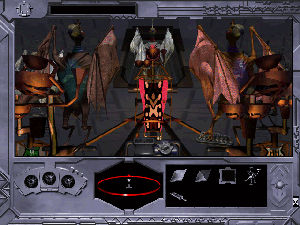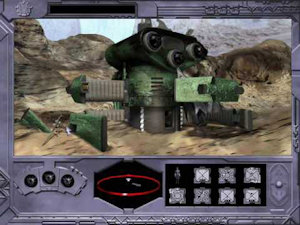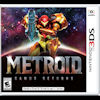RAMA (Summer of Arthur C. Clarke)
Before I begin, welcome to my Summer of Arthur C. Clarke. On the heels of last year's popular Slasher Summer, this year I'm leaving behind the guilty pleasure of the niche horror genre and exploring something a little closer to my own heart: namely science-fiction. Of all the sci-fi greats, none have influenced me more than the late Arthur C. Clarke, my personal favorite of the "Big Three" from the Golden Age of the genre (Asimov, Clarke, and Heinlein). This summer, I am going to look at a few of his most famous works, including the entirety of his 2001 series and the tiny handful of adaptations that have been made for film, television, and video games. Strap in and prepare yourselves for a journey into the stars and the mind, and let us never forget how much richer the world of fiction is for having been blessed by the incomparable Sir Arthur C. Clarke.
Adapting the Rama story as a video game is a solid idea, and in 1996, Sierra On-Line, working closely with both Gentry Lee and Arthur C. Clarke, did just that. The simply titled RAMA is a point-and-click adventure/puzzle game in the style of its immensely popular contemporary, Myst. Despite being over twenty years old, it holds up surprisingly well and remains absolutely playable, as long as you can accept the more primitive 3D graphics and hokey Full Motion Video stuff. It's not the first video game based on Rama (there's also a 1984 text/adventure game based solely on Rendezvous with Rama that is not very good), but it is the most ambitious.
STORY
 | | The avians have a significant role to play |
Loosely adapting characters and events from Rama II, RAMA begins with you, the protagonist who is only refered to as "Ace," entering the mysterious cylindrical vessel as a replacement for the recently deceased General Borzov. Instead of leading the already-in-progess Rama investigation, you are little more than a grunt tasked with exploring on your own. You get to know the main players through the occasional cutscene and vidmail, and anyone who's read Rama II should know them all pretty well: Nicole des Jardins, Richard Wakefield, Francesca Sabatini, David Brown, etc. A few of the characters are given slight alterations--for example, Michael O'Toole is significantly older than he is in the novel--but on the whole, these characters are true to their counterparts, if a bit less nuanced.
The plot also maintains some of the same significant beats. Without spoiling too much, for instance, one character is killed fairly early during an attempt by the team to capture a biot (one of the biological robots that inhabit Rama), though you aren't physically there to witness the event. Indeed, almost all of the plot happens off-camera, with you getting occasional updates on what's going on when you bump into other characters or receive messages on your wrist computer. This isn't a problem for anyone familiar with Rama II, but anyone going into the game without ever having read a Rama book might feel a bit lost and confused, especially as things ramp up during the second half.
For fans of the books, though, the game is loaded with details and callbacks, not just to Rama II but to later books in the series as well. Though not physically present anywhere on Rama, the myrmicats (creatures not even mentioned until Garden of Rama) play a significant role, for example, as do the octospiders from Rama Revealed. The game ignores the original Rendezvous with Rama altogether, however, which can be a bit disappointing. Naturally, some major changes had to be made in order to make the story work as a video game, but they are handled remarkably well. It is easy to see that Lee and Clarke worked hard with the game designers to keep everything feeling like Rama, even if the terrain is rocky rather than flat, gravity never changes, and we never get to see any dramatic weather changes. Most of the narrative alterations occur near the end of the story, in an effort to set up a sequel game that unfortunately never materialized.
|
[Story: 9 - It's a more faithful adaptation than you'd expect, but most of the plot happens off-camera and gets confusing for anyone not familiar with the books.]
|
|
GAMEPLAY
 | | If you've played any of the Myst games, you know what to expect |
Despite no longer being in fashion, the point-and-click adventure game has a deceptively simple charm to it. RAMA plays almost exactly like Myst in that you are given fixed camera landscapes that you can click on to pick up items, move, or interact with various objects. You have an inventory list in the corner of the screen and a compass at the bottom. Three Rama-style eyes round out the bottom left of your HUD, and those are for getting a closer look at your inventory items when you need to turn them around or otherwise manipulate them.
Movement can be incredibly disorienting (especially when you get to the maze-like sections of "New York" during the second half), and the map included on your computer is all but useless. Also, placing items in your inventory is painfully imprecise, and the amount of room you're given is far too sparse for the enormous amount of trinkets and puzzle pieces you'll be collecting on your journey. A simple directory system or even a sorting function would have gone a long way to alleviating this. Also, there's one item you will use more than any other, especially if you like to examine everything on the screen, and that's your little robot companion, Puck, who acts as your "examine" and "hint" function. Puck desperately needs a button of his own, because it gets frustratingly bothersome needing to constantly scroll through your inventory to get to him every few minutes.
However, the puzzles are well-balanced and interesting, forcing you to think laterally and keep notes. It's probably too challenging for most kids, and there are a lot of mathematical problems that involve having to translate among three different numerical systems (decimal, hexadecimal, and octal) with three different modes of representing them (regular, alien symbols, and color codes). I'm not ashamed to say I had conversion calculators handy to switch between the three different bases. It gets more challenging as you go--and there are some real head-scratchers near the end--but I never had to resort to cheating. (I don't consider the conversion calculators to be cheating.) Usually, if I was stumped, it was because there was a handful of pixels somewhere I had failed to realize was something I could interact with or pick up.
-e. magill 7/26/2018
THE UNAPOLOGETIC GEEK'S
SUMMER OF ARTHUR C. CLARKE: | |
|
| MORE LIKE THIS: |

|
Metroid: Samus Returns
This remake of one of the original Game Boy's greatest games is a decent way to pass the time while waiting for Metroid Prime 4. [4/19/2018]
|
|
|
|
|